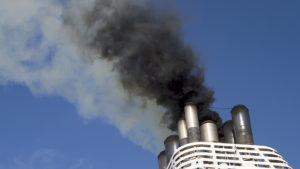
The shipping industry will have to commit to more ambitious policies, and fast, if it wants to get on track with the adoption of clean technologies and meet the energy efficiency design index (EEDI) requirements, the International energy Agency (IEA) said.
Namely, in its latest report titled “Tracking Clean Energy Progress: 2017” the agency said that the international shipping industry is not on track with meeting the 2°C scenario targets by 2025.
“Meeting the 2DS requires the global shipping fleet to improve its fuel efficiency per vehicle-km at an annual rate of 2.3% between 2015 and 2025. Yet, the EEDI of the International Maritime Organization (IMO), applying to new ships only results in a fleet average improvement of 1% to 2025,” the report reads.
Despite the fact that the IMO has made progress in agreeing on regulations on reducing sulphur oxide (SOx) and nitrogen oxide (NOx) emissions from ships, its GHG policy is still under consideration, with an initial GHG strategy expected by 2018, which will be a stepping stone to the final strategy expected by 2023.
“Implementing IMO’s final GHG strategy only by 2023 will have very little impact on the possibility of meeting 2025 2DS targets,” the IEA stressed.
“Getting on track with the 2DS requires an annual efficiency improvement of 1.9% MJ per vehicle kilometre (MJ/vkm), and 2.3% MJ per tonne kilometre (MJ/tkm), between 2015 and 2025. This can be achieved by exploiting the efficiency improvement potential for new and current ships and the adoption of operational improvements. Efficiency technologies available today could roughly halve the average fuel consumption per vehicle kilometre of new ships (IEA estimate based on Smith et al., 2016). This will need to be complemented by the use of advanced biofuels.”
As a result, for 2017 the agency has recommended several steps for the sector to up its game on the matter including strengthening of enforcement mechanisms for emissions from ships and the EEDI, including inspections, sanctions and legal frameworks, to ensure compliance with IMO measures.
In addition, the IEA believes that the industry should stimulate the engagement of ports in encouraging GHG reductions in ships, e.g. with bonus/malus schemes supporting clean ships from fees applied to ships with poorer environmental performances, and introduce carbon taxes on shipping fuels based on their life cycle GHG emissions.
A global sulphur cap of 0.5% on marine fuels is scheduled to come into force in 2020. Meeting this cap will require significant changes in the fuel mix and may lead to higher maritime fuel prices.
According to IEA, heavy fuel oil (HFO) currently still holds the biggest portion in the fuel mix with 84% percent stake. In order to cut the C02 emissions this would have to be desulphurised or replaced by low-sulphur diesel, LNG, biofuels or other synthetic fuels. Alternatively, vessels will need to be equipped with scrubbers to reduce emissions of SOx.